Last year’s stacked lineup of games for the Game Awards had us thinking: What was the best year in gaming? As part of our series on determining gaming’s best year, we’re putting together an article on each year, charting the major releases and developments of the year, and talking about both their impact and what made them great.

The Year: 2008
Outside of gaming, 2008 is already a pretty historically significant year. The subprime mortgage crash caused a global financial crisis, the Beijing Olympics set the stage for Michael Phelps gold medal spree, and Barack Obama was elected the 44th president of the United States.
2008 isn’t just a huge year for history textbooks: It’s a huge year for tabletop games as well as video games. Firmly in the middle of the seventh console generation, 2008 takes the momentum from video games released in 2007 and takes off running, with a stunning number of releases that would turn into all-time classics. The tabletop games released during this time are equally impressive, seeing the release of both games still popular today and updated editions for two big franchises.
Iron Man Heralds the MCU and the Modern Comic Book Movie
It’s hard to overstate the release of Iron Man on the cultural landscape of both modern Hollywood and “Geek” culture. Starring Robert Downey Jr and directed by Jon Favreau, the film follows billionaire playboy inventor Tony Stark as he goes through his origin story of becoming the super hero, Iron Man. The film is a smash hit at the box office, and Marvel Entertainment suddenly becomes big business. The very end of the film sets up something much larger, as Tony Stark has a conversation with Nick Fury about “the Avengers Initiative.”
That’s the real legacy of Iron Man as a film. That short post-credits scene. On its own, Iron Man is still a fun movie, with great action scenes and a terrific performance by Downey as Tony Stark matures throughout the film. But the stinger leaves the door open to set up something larger: the idea of a cinematic universe of films. That cinematic universe, the MCU, would become a dominating part of pop culture and the box office, as niche characters like Rocket Racoon suddenly become household names worth millions of dollars. The success of the MCU helps bring success to many other things that were once considered too nerdy for mainstream appeal, like Dungeons & Dragons or video games, and ultimately helps increase visibility and interest for gaming to a wider audience.
A Good Year for Tabletop
Pretty solid year for tabletop games, all things considered. Tabletop gaming hasn’t exploded in popularity yet like it would in the 2010s, but there’s quite a few games that get released this year that are still commonplace at game nights around the world. Games like Dominion, Dixit and Android are still popular today.
Dixit in particular is a favorite of mine. Its a very simply game where the core gameplay conceit is centered around the games wonderful art cards. The storyteller picks a card form their hand and makes up a sentence for it, and each player picks a card from their hand to add to the pot that they think is similar to the sentence. The players then have to guess which of the cards they think is the storytellers, and get points based on how many right or wrong answers there are. It’s a simple game, but the dreamlike art for Dixit helps make for really creative prompts that make the guessing game aspect different and fun each time.
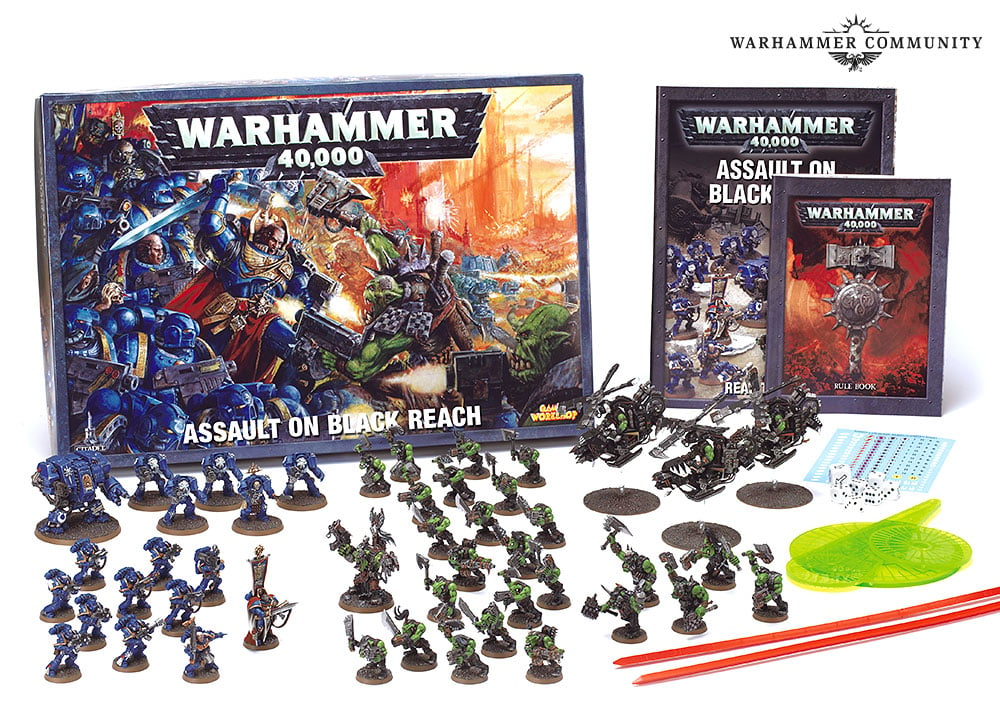
Warhammer 40,000 Fifth Edition
Warhammer 40,000 fifth edition holds incredible nostalgia for me, as it was the edition that first got me into the game. I remember some teenage camp counselor at Boy Scout summer camp brought his rulebook and Imperial Guard with him, and I remember looking through that rulebook during some merit badge class where I for sure should’ve been doing something else and thinking, “This is the coolest thing I have ever seen.”
As for the game itself, I’d argue fifth edition’s legacy is that it’s the best version of the middle years of Warhammer 40k’s history. Third through seventh edition had the same core rules base, and while each new edition tweaked the game a bit, a third edition codex was playable through the end of seventh. Fifth edition is when this all worked best, trimming the fat from the previous two editions’ core ruleset while not yet burdened with the problems that’d arrive in the two editions that followed. It introduced true line of sight and running (AKA advancing) to the game as well.
Two of Warhammer’s most iconic faction rules also get introduced during fifth edition, Orders for Imperial Guard and Power From Pain for Dark Eldar. On that note, the Dark Eldar fifth edition codex might be one of the best codexes ever released for the game, featuring beautiful new models and rules that felt both strong and thematic on the tabletop.
Assault on Black Reach was the starter box for this edition, and it featured a showdown between the Ultramarines and Orks. When I look at the models for this set, I can’t help but feel like it’s peak Warhammer 40k. Also, it’s the only place where you could buy Ork Deffkopters for, like, a decade. So it was a pretty popular box.
Was fifth edition all sunshine and rainbows? No. Its codex power levels were all over the place. On the low end of the list, the Tyranids book was awful. All your synapse creatures were very vulnerable to instant death and once your synapse was gone, the army fell apart. It lacked the offense to make up for these vulnerabilities, and struggled badly against armor. Plus, if your opponent played Dark Eldar, just pack up your stuff because poison ruined your day. On the other end of the power spectrum, Necrons and Grey Knights both had codexes with rules that defied belief. Dreadknights would just kick you in the teeth and then eat your lunch, while Necron fliers killed you no matter where you hid.
Also, fifth edition wound allocation. God, fifth edition wound allocation.
Those negatives aside, fifth is overall one of the best editions of 40k. It’s the greatest hits of the games adolescent years, before things started to sink in sixth edition and long before eighth would come around and revitalize the game.

Dungeons & Dragons 4th Edition
If you ask me, time has been exceptionally kind to the legacy of Dungeons & Dragons 4E.
You probably won’t be surprised when I saw that by 2008, video games were a pretty big deal. If you don’t take my word for it, all you really need to do is scroll down a bit on this article. In comparison, tabletop gaming wasn’t nearly as big of a deal. Actual play podcasts of TTRPGS and the resurgence of “geek” culture in the mainstream was still a few years off. So, Wizards of the Coast decided the best way to get more people playing the new edition is to make Dungeons & Dragons less like a traditional roleplaying game, and more like a video game.
When the new edition released, there was a clear shift in focus away from non-combat encounters and utility and much more focus on encounters themselves. The rules around combat were more concrete, discouraging the “theater of the mind” style of running games, instead heavily encouraging the use of a grid and physical miniatures. Classes were broken up into roles (defender, striker, controller, and leader), similar to how MMORPGs were breaking up their classes into roles like tank, DPS, and support. Martial classes had much more expanded abilities and utility to keep up with magic classes, who generally found their options shrunk to keep in balance. Healing surges and action points were introduced to reduce the player’s tendency to long rest after every single fight to heal up and gain resources back.
With these changes in mind, Dungeons & Dragons 4E’s greatest strength was its focus on tactical and engaging combat encounters, taking the best notes from hack n’ slash video games and running with them. It’s also 4E’s biggest problem: if I want video game-y combat, why don’t I just play a video game?
While I appreciate the focus on combat encounters as someone who mostly plays strategic wargames nowadays, the reason so many people listen to Critical Role every week isn’t to hear about voice actors thinking big smart in a dungeon crawl. It’s the storytelling, worldbuilding, and exploration that happens in the game as well as combat that caught the attention and imagination of fans worldwide. The fact that 4E intentionally put far less focus on this area of the game soured it for most people, leading to the rise of the competing Pathfinder roleplaying game and the fifth edition of Dungeons and Dragons giving more focus back on outside combat rules.
Nearly sixteen years later, the frustration that many players had with 4E has faded away and given us a better glimpse of the edition’s modern legacy. 4E ushered in the Dragonborn and Tiefling as core playable races, as well as codifying the background system and short rest into the basic rules. Combat focused role playing games like Lancer took the resource management and combat focus that 4e pioneered and refined them, while managing to keep combat a well-paced and streamlined experience.
In its time, Dungeons & Dragons fourth edition was not well-loved. Yet the game’s legacy and influence on tabletop games is unmistakable, and as someone who’s favorite part of TTRPGs is great combat encounters, I think its a bright spot in gaming for 2008.
Jonathan Bernhardt: I am somewhat of a partisan for 4E; my general reaction to complaints about there not being great and engaging systems for playing your character outside of combat is that the majority of the time I’m playing, I do not want or need deep or intrusive modeling systems to roleplay my character. Where I need system support to mediate my roleplaying experience with mechanics is in combat, and I vastly preferred the disciplined encounters of fourth edition to the handwavy “theater of the mind” in third and fifth, along with the concomitant ascendance of the martial classes to something approaching mechanical parity. I had a great time with the system and both played short, 6-10 session campaigns of it and ducked in and out of a massive level 1-30 weekly game that went on for some 10 years before concluding in an apocalyptic planes-war.
Most of this is personal preference, except for one thing: The problem with the, “well if you want a video game, why not just play a video game?” question is that for some absolutely baffling reason, there was never a 4E video game. When fourth edition was ascendant on the table, CRPGs were more or less dead as a genre form. It was only with the advent of fifth edition that Hasbro and Wizard’s sluggish, inept licensing strategy figured out, “hey, we should do something with this property.” Eventually in 2023 that would produce Baldur’s Gate III, which is not a 4E game but is the closest that we’ll ever get. And then Larian Studios very publicly decided they weren’t doing business with Hasbro and Wizards again, which probably says something about why it took so long for this game to materialize in the first place.
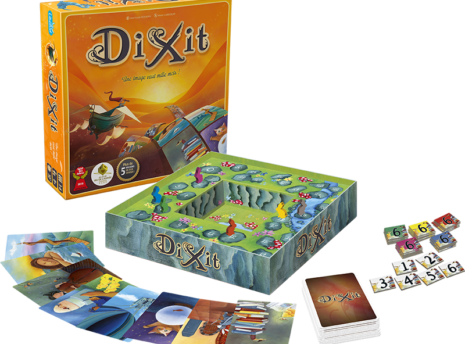
Dixit
The 2010 Spiel des Jahres winner, Dixit is a 2008 board game in which players take take turns playing the role of Storyteller. Players take hands of cards from the game’s deck of lovingly-illustrated cards, each depicting a scene or action, and each round the storyteller chooses one card from their hand and gives a brief description about that card, then places it face down to be joined by cards from each player’s hand. Players then shuffle the cards and turn them face up, and players vote on which card they think was the storyteller’s. For the storyteller, the goal is to have only one person get the correct answer to score the most points – no points are awarded if everyone gets it correct (too obvious) or no one does (too obtuse), while players score for guessing correctly and having their card chosen. It’s an easy game to learn and a good casual time – it’s a game with very few words and one which can be good for children as a result, and helpful as they learn new words and develop a better grasp of language. It’s a wonderful low-stakes game to play with family and friends.
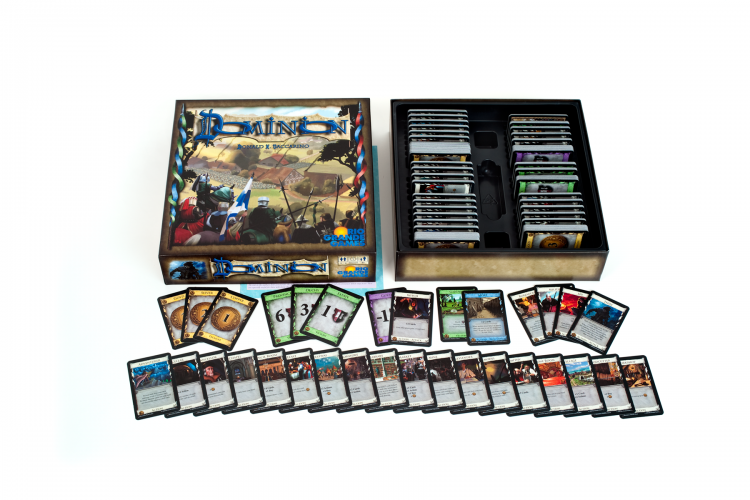
Dominion
Raf Cordero: How big a deal is this Donald X. Vaccarino design? Well it single-handedly launched an entire genre of games with the invention of the “deckbuilding” mechanism, and also launched eternal confusion among gamers who thought a game like Magic The Gathering had deck building (that’s deck construction these days).
Originally released in 2008, this deck-building game quickly rose to popularity due to its simple mechanics, ease of entry, and fantastic depth of gameplay. As a testament to its quality, the game promptly won the Spiel des Jahres in 2009 and went on to receive recognition from a number of other organizations. While deck-building is not a unique mechanic, the secret sauce here is that players vie to build their decks from the same pool of cards and the core game, along with its multitude of expansions, contains more card types than are possible to use in any one game session. This means that just about any game of Dominion is going to be unique–prior to starting a game, players select a combination of these card types to include in their available options for purchase during their turns.
Dominion is a fun and fast game where experienced players can just toss out cards and get in a game without much fuss. Teaching/learning the core mechanics is easy (the game manual offers a few starter combinations) and the rules are simple enough that players only familiar with certain game types can sit down to other expansions and be comfortable playing. Trying to explain this game to newcomers will often have it compared to Magic the Gathering, which is probably about as close as you can get when discussing the universal-but-varying aspect of the game with vaguely similar concepts. Unlike MtG however, the onus is not on the players to bring their own collection of cards and there is no way you can bankrupt yourself chasing specific builds. Each box set is the same collection of cards, with expansions offering different cards on a theme and perhaps a slightly different mechanic to spice things up.
It is worth noting that picking the types of cards you are using also determines the mood and flow of the game. It is entirely possible to have a passive social game without interacting directly with other players. It can be nice to chat idly and play side-by-side in a race to score a winning amount of victory points. On the other side of the coin, there are plenty of opportunities to include attack cards or actions that impact other players and some aspect of gameplay is also building out defenses around that and/or making alliances to stop players that are “the problem.” This more-active game style can ultimately be more rewarding for some players, but as with anything that gets competitive can also be the cause of upset.
This is one of those games that is so open mechanically that an avalanche of expansions is inevitable. For players who want to follow along, there are at least a dozen expansions available that total more than 4,000 total cards. We’re talking about a good amount of shelf real estate. As a collection grows there may be cause to pick up specialized carrying cases, and if you can find a “lazy susan” turntable of a sufficient size it can be very helpful.
Video Games
Man, something was in the water in 2008, because the video game industry was firing off some all-time heaters this year.
I can’t cover all of them here without my hands becoming riddled with mega-carpal tunnel, so I’ll focus on four releases from the year that hold the most nostalgia for me. So if you’re a fan of Metal Gear Solid 4, Super Smash Bros Brawl, Castle Crashers, Gears of War 2, LittleBigPlanet, Persona 4, Saints Row 2, or Star Wars: The Force Unleashed, I’m sorry. Those are all on my cutting room floor. They’re very good games, though.
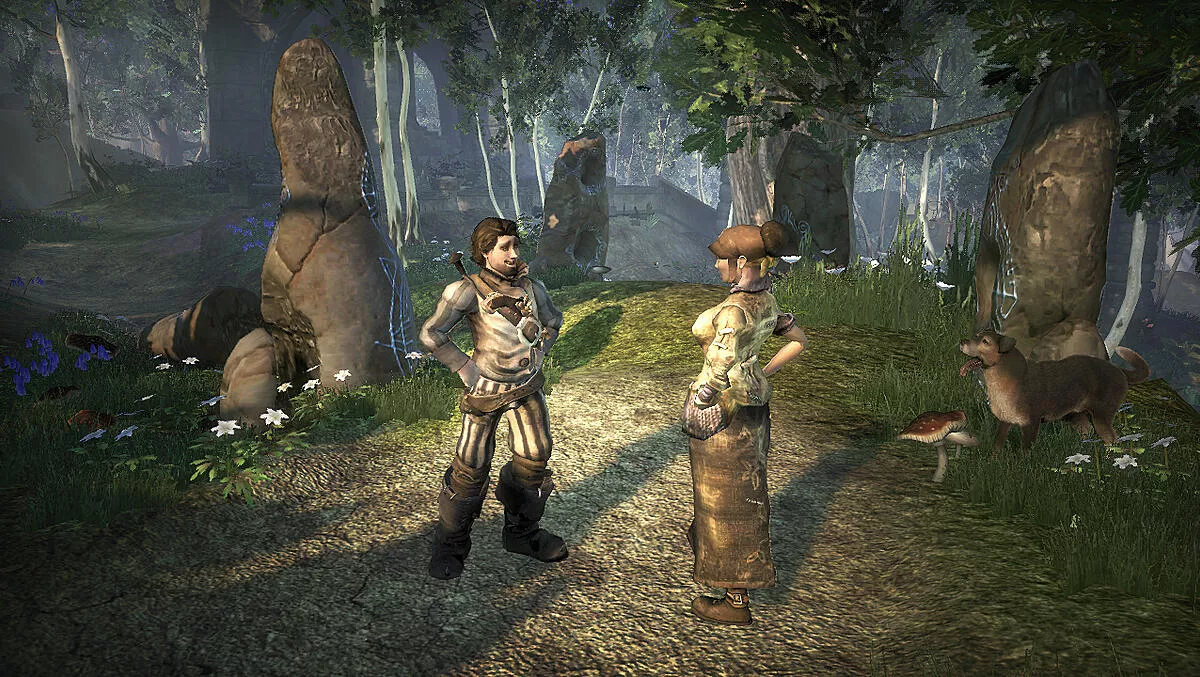
Fable 2
Fable 2 is the sequel to Fable, a game where you control an adventurer through their journey in the land of Albion, starting from humble childhood beginnings to prime-time adult hero stuff. The selling point on the tin is how “immersive” the life of your character can be. You’re not just blasting Goblins in this game, you’re getting money at jobs! Buying Real Estate! Getting married and having a family! Or maybe you’re evil, and you kill that family! Marry a hooker! Start a secret family, with a second hooker! Truly, the game was your oyster.
Fable 2 doesn’t cast a long shadow like some of the other games on this list, but it sits fondly in my memory as a very cozy game. Its artstyle is bright, the gameplay loop is simple but charming, there was plenty of humor in the sidequests, and there was plenty to do aside from just running around and killing stuff for XP. It isn’t the best game on this list, but I have tons of fondness for it in my heart.
TheChirurgeon: While it’s a stronger game in many ways than the first, and is much more accessible, I still prefer the gameplay of the original Fable. That said, the story is definitely much stronger in the sequel, and it’s a bit more inspired with regard to its characters and art design.
Jonathan Bernhardt: I’m a Fable 2 preferer myself, but it has a good deal to do with me still having the music box theme stuck in my head over a decade later.
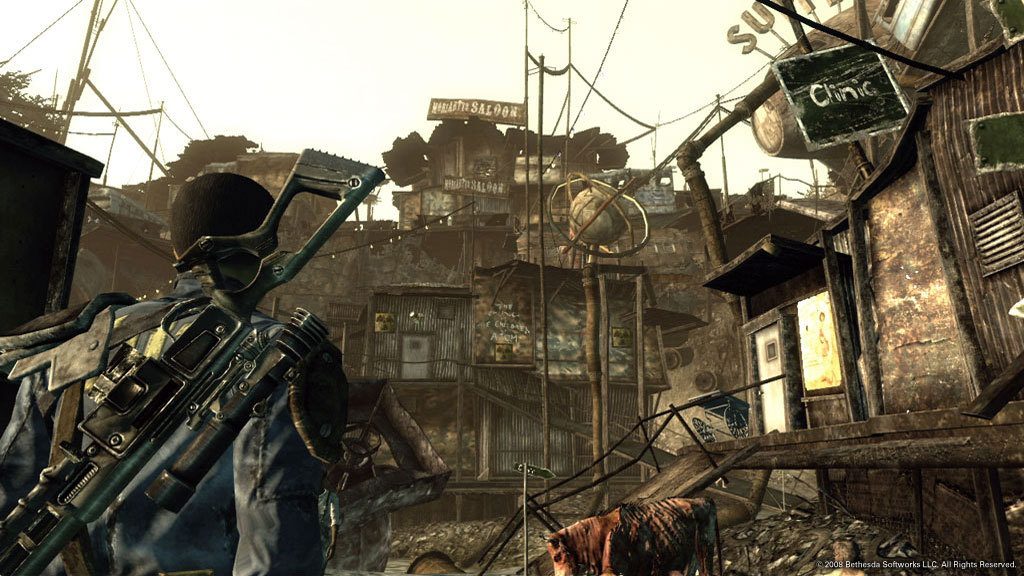
Fallout 3
The game that launched a million pip-boys. Fallout 3.
It’s not like Fallout as a franchise wasn’t popular before the release of Fallout 3. Fallout’s original CRPG releases were classics in their own right, but they were cult classics. Extraordinarily popular to the niche crowd of cRPG enthusiasts that commanded a much smaller portion of the gaming fandom than they do today.
Fallout 3 took the franchise from a little-known gem to a household megahit, and cemented Bethesda as one of the developer giants of gaming. Fallout 3 would spawn such a dedicated and fervent fanbase that the Fallout would go on to spawn not just a successful sequel, but an offshoot sequel from Obsidian, a live service quasi-MMO, a mobile game, and soon Fallout will get it’s very own premium TV show from Amazon.
As for the game itself, it’s the bread-and-butter Bethesda RPG with the Fallout universe slapped on it. An open world ripe for exploration, stiff NPCs to chat with, and combat just high enough above serviceable to hold up the gameplay loop. If that seems a little negative, its because I’m looking at it with a modern lens. In 2023, the standard for what an open world action role playing game has left the Bethesda format dated. It isn’t an easy task to look back on Fallout 3 and ignore it’s glaring flaws.
To really understand why Fallout 3 is so important, you have to place yourself in the time it was released. In 2008, there was no experience quite like wandering the Capital Wasteland. Since Fallout was less well-known before the release of Fallout 3, many players’ first taste of the series’s satirical take on the post apocalypse was here. Games this big were rare, especially ones where you got to shoot guns. And no other game out there featured a giant robot that hated communism blasting its way through the heart of Washington D.C.
Is Fallout 3 a game I would recommend playing nowadays? No; I just think there are much better games on the market right now demanding your time. Even if you’re desperate for the Bethesda Fallout experience, Fallout: New Vegas is right there. But is Fallout 3 one of the most important games ever released, for reigniting one of the most popular franchises in gaming, birthing a new generation of RPG fans, and skyrocketing Bethesda’s presence in the industry? Absolutely.
Jonathan Bernhardt: Undeniably one of the most important games of its decade. It’s a crying shame what it did both to the Fallout franchise and to Bethesda’s core studio output moving forward.

Left 4 Dead
The first time I played Left 4 Dead, I remember being worried that I would chicken out while playing because I have such a weak stomach for horror. Instead, I ended up playing all night with my buddies over LAN, my bloodlust for killing zombies overcoming my nerves.
Left 4 Dead is an incredibly clever co-op shooter. From the design of the special infected to the behind-the-scenes gamemaster system increasing or decreasing the intensity based on the teams performance, Left 4 Dead games always feel frantic and fun. You’ll go from feeling like death on two legs mowing down a zombie horde to helpless and panicked when a Hunter pounces on you at a bad time. The feeling of hearing a Witch sob and you don’t dare even whisper in real life as you carefully navigate around it. The wave of relief that washes over you after a narrow escape into an escape room, howling at your friends to slam the door shut as soon as you get in.
It’s a roller coaster ride that crescendos to the grand finale last stand levels, which require the players to survive for several minutes against a truly overwhelming undead mob. Every bullet, pipe bomb, and molotov you’ve got available are used just to escape by the skin of your teeth. There’s rarely a moment in these last stands where the situation feels truly under control, as just when you start to get the battle under your feet Left 4 Dead throws a colossal Tank zombie to knock you back into chaos.
It’s a brilliant formula, one that Valve would innovate on when they made the sequel for Left 4 Dead and a formula that Fatshark would use to make their own co-op shooters Vermintide and Darktide. On it’s own though, Left 4 Dead stands the test of time as still being a blast to play with friends, and when considering a list of the greatest multiplayer games of all time Left 4 Dead deserves a spot near the top.
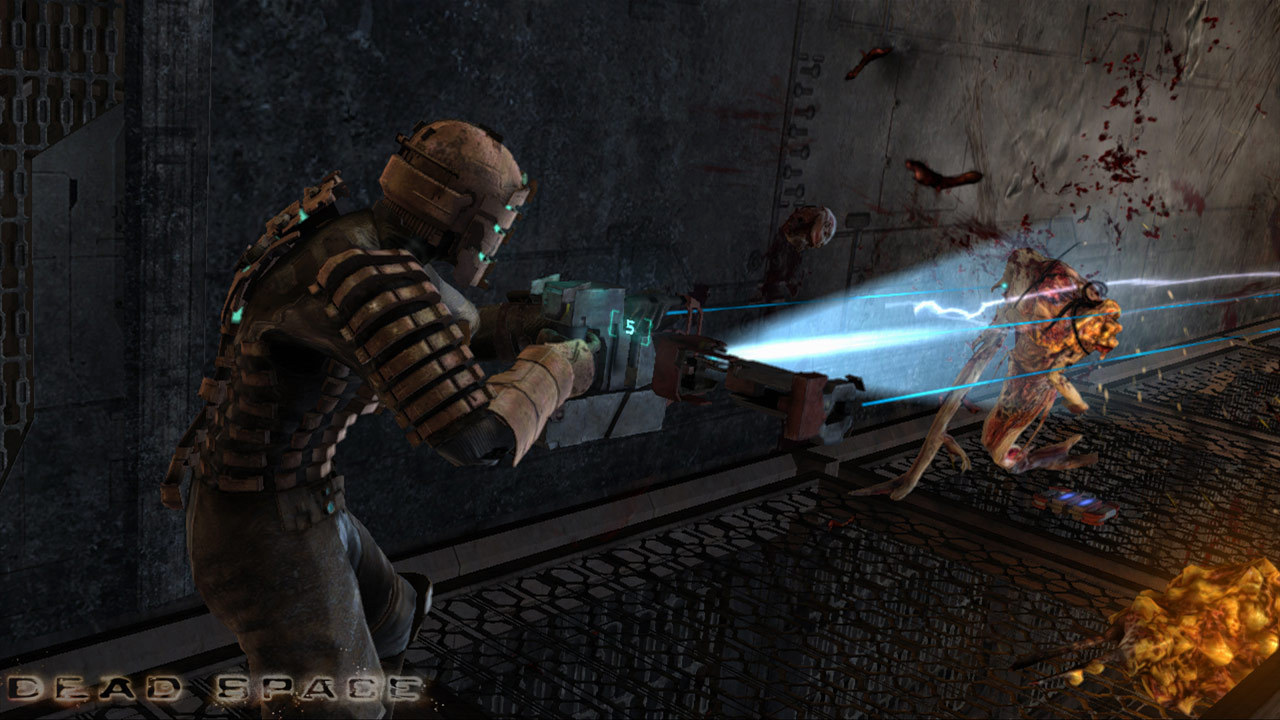
Dead Space
TheChirurgeon: After half a decade of being lampooned for publishing nothing but Madden and sports franchise updates (mostly by people who ignored The Sims as a gaming juggernaut), Electronic Arts came out swinging in 2008 with two new properties – Mirror’s Edge (see below) and Visceral Games’ Dead Space, a sci-fi horror game which built off the gameplay of Resident Evil 4 and brought it back to the horror side of things. Players play the role of Isaac, an engineer investigating the derelict USG Ishimura, a planetcracker ship which has gone dead after coming across a mysterious alien artifact which turned the crew into alien monsters called Necromorphs. Part Alien, part Event Horizon, part System Shock, Dead Space is a frighteningly good time and features tight pacing and some of the best sound design in a game. If, like me, you loved Resident Evil 4 but hated that the game discarded most of the series’ horror, then Dead Space was a welcome breath of fresh air. It’s arguably outdone by its sequel, but the two games are different enough that both have their defenders and the remake is absolutely worth your time these days.
Jonathan Bernhardt: An excellent survival horror game that stays just on the right side of self-parody with its comical levels of gore, dumb slasher film victim behavior by the supporting cast, and grimly convincing (but still appropriately ludicrous) reworking of an incredibly thinly-veiled Scientology into a star-spanning death cult. The game finally steps cleanly and fully over that line with the spooky rendition of Twinkle Twinkle Little Star that greets Isaac when he steps off the tram onto the Crew Deck, but by then the game’s no longer scary so much as it is extremely, incredibly tense, without ever devolving into straight action-comedy like Resident Evil 4 does. I think I prefer Dead Space 2, but only because this game badly fumbles the final act to tie everything up and go home in a way that Dead Space 2 very much does not.

Mirror’s Edge
TheChirurgeon: Parkour had a bit of a moment in the mid-aughts, really taking off in 2006 after the release of 2006’s Casino Royale, a film which both completely revitalized the James Bond series and also opened with one of the best chase scenes in movie history. DICE’s 2008 title Mirror’s Edge would give us an entire game based around free running, putting us into the role of Faith, a courier responsible for shuttling illegal goods around the game’s corporate police state. What follows is a beautiful and action-packed game which emphasizes smart platforming and evasion over combat, with an incredible soundtrack and some great set pieces. The gameplay almost begs you to speed run it, and it’s easy to get caught up in replaying runs to optimize your time and movement.

Grand Theft Auto IV
TheChirurgeon: Rockstar took us back to Liberty City with their jump to seventh generation consoles, introducing us to Niko Bellic, fresh off the cargo ship from a former Soviet Republic and thrust fresh into a life of crime in the United States. GTA IV was another universally beloved entry in a franchise that seemed incapable of producing anything but hits and while the game wasn’t quite as expansive as San Andreas‘ faux California in terms of terrain and size, it also had less dead area and highway driving in it’s faux-NYC/Long Island/north Jersey area (though this also makes it feel a little less balanced). GTA IV was another top game of the year contender, with a vibrant open world and a story which emphasized more moral choices – with a branching story – this time around.

Braid
TheChirurgeon: Jonathan Blow’s 2008 indie game changed the way the industry looked at video games overnight, demonstrating that retro-inspired games could be successful, showcasing how small, focused games could be a big deal, and also introducing a level of narrative thoughtfulness and mystery that games would seek to emulate for years following. Ostensibly a puzzle-platformer with time travel mechanics about saving a princess, Braid is also a game about our relationship with time and causality and the conflict between the linear nature of both and how we perceive them. Despite being a small indie title, Braid was somehow one of the biggest games of 2008 and Microsoft securing it as an Xbox 360 exclusive was a major coup – it immediately helped establish Xbox Live Arcade as a platform for indie releases. Braid is an incredibly engaging game and one of the most interesting and thoughtful games ever made. It builds on the language of games which came before, subverting them in interesting ways, while also offering a glimpse of what games can be when they truly marry storytelling with gameplay mechanics.
Was Everything in 2008 Great?
No.
Spore
God will not forgive you for your Spore creations.
Why It Was the Best Year in Gaming
2008 is an incredible year in gaming, for both tabletop and video games. The video games released this year would cast long shadows, directly influencing the modern gaming landscape sixteen years later. The Tabletop games released this year would become nostalgic classics that players still wax poetic about. 2008 has a strong shot at being the best year in gaming, and if it isn’t the best, it’s absolutely a top contender for sure.
This article is part of a larger series on the best year in gaming. For more years, click this link. Have any questions or feedback? Drop us a note in the comments below or email us at contact@goonhammer.com.
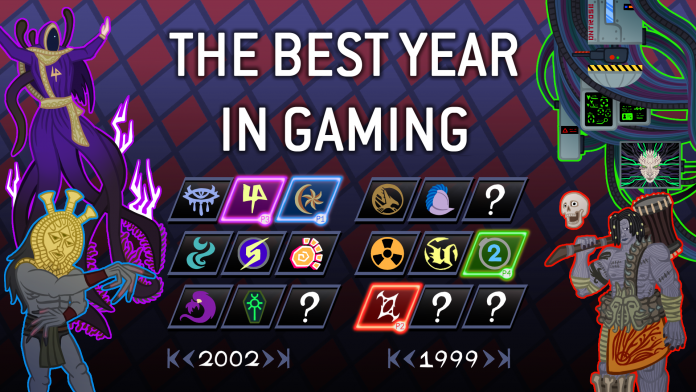


You must be logged in to post a comment.